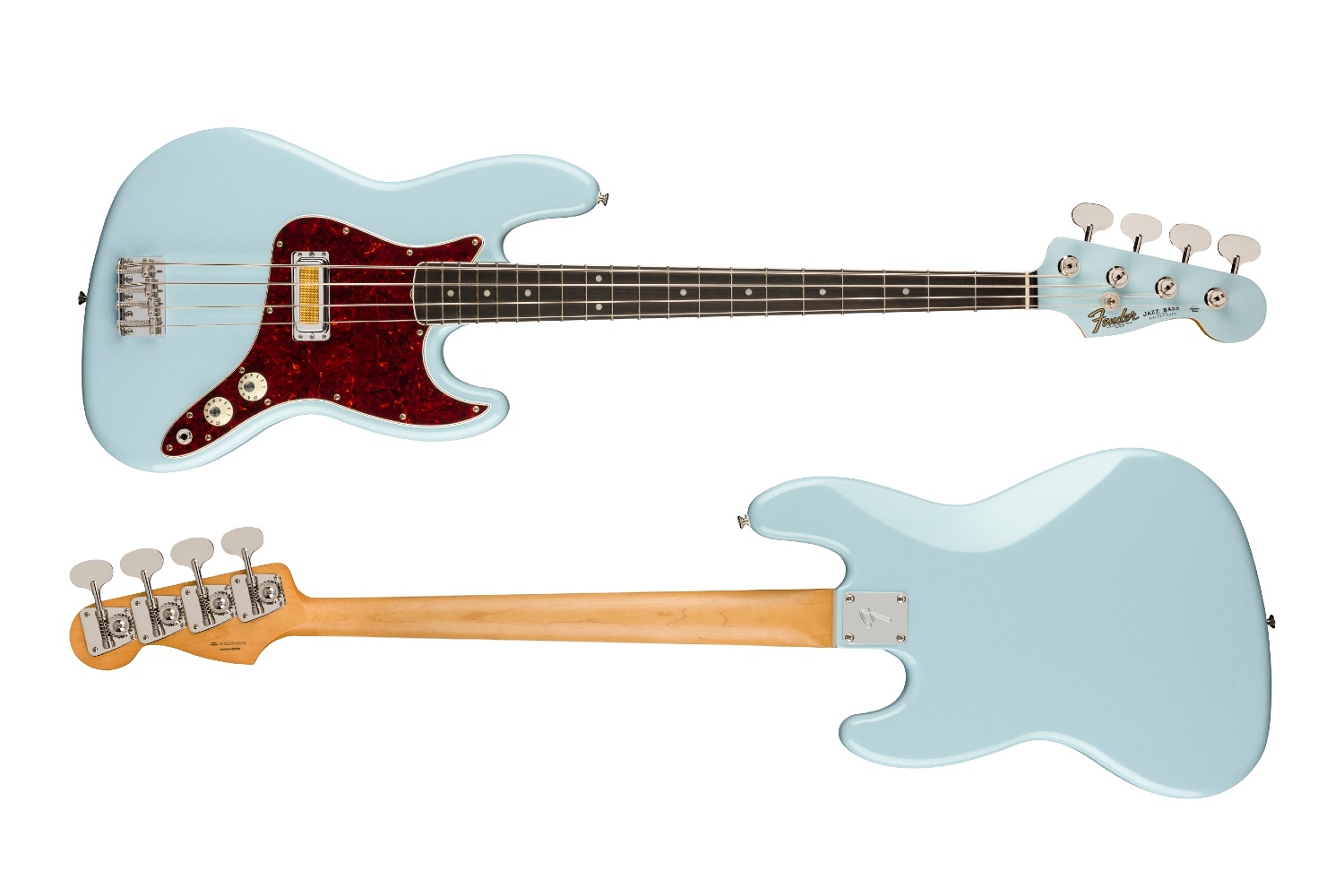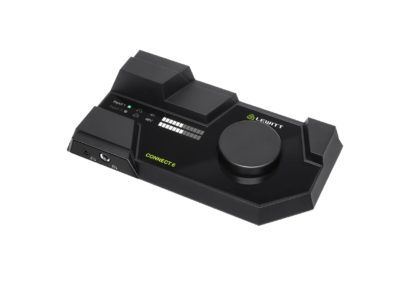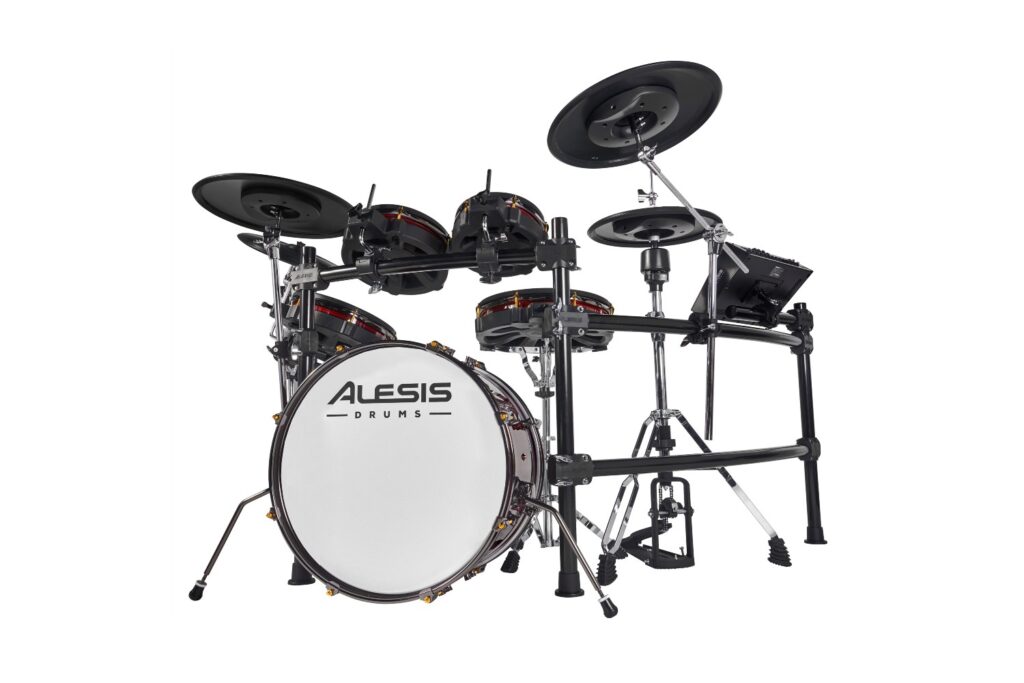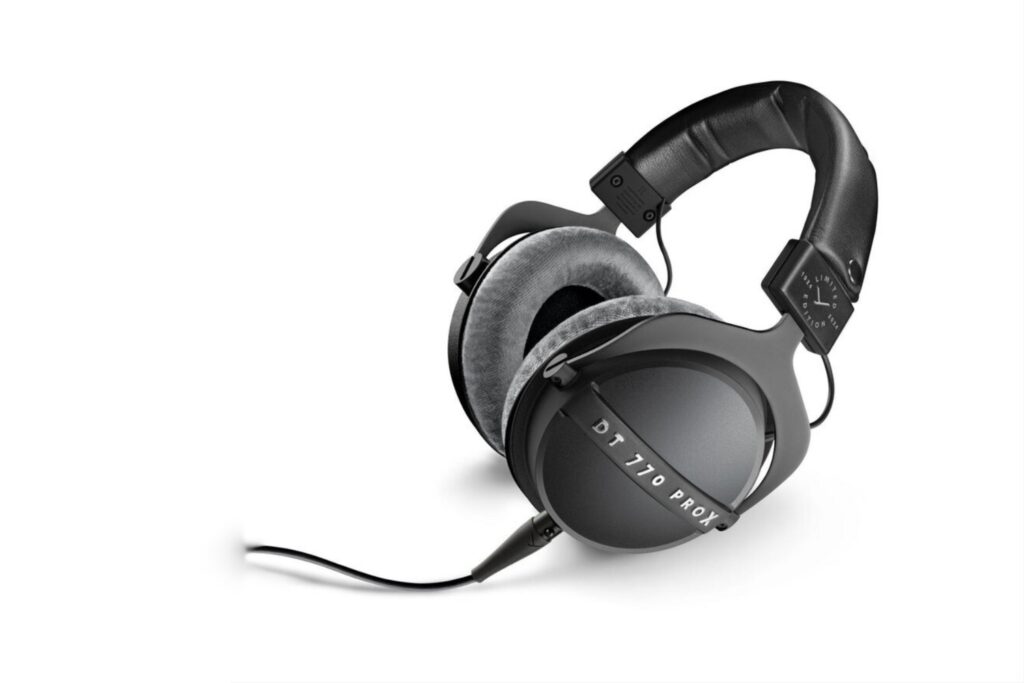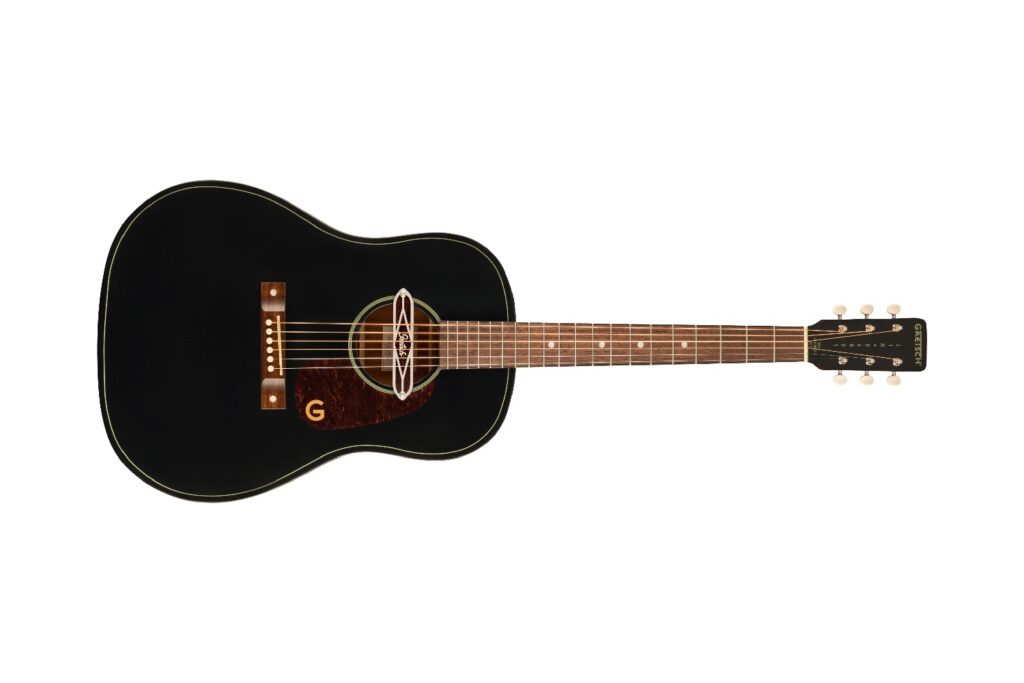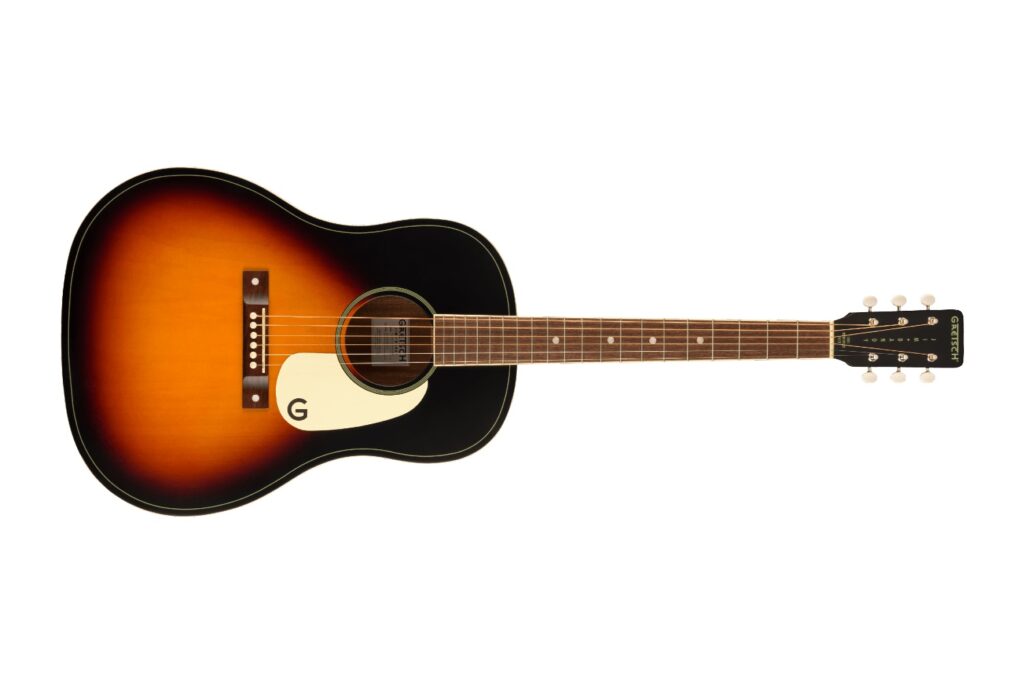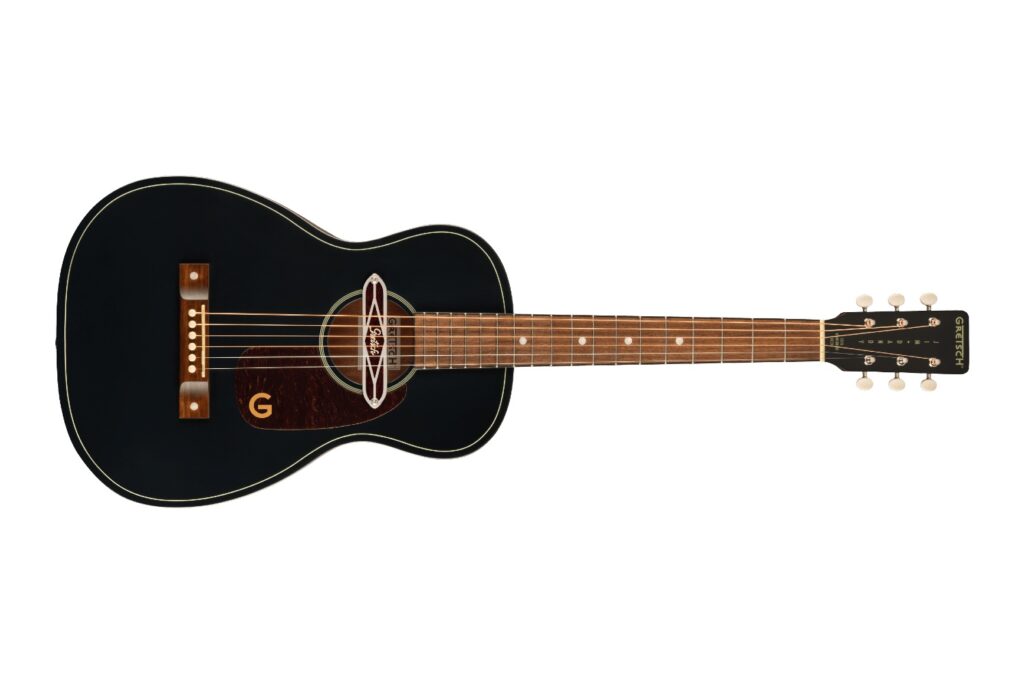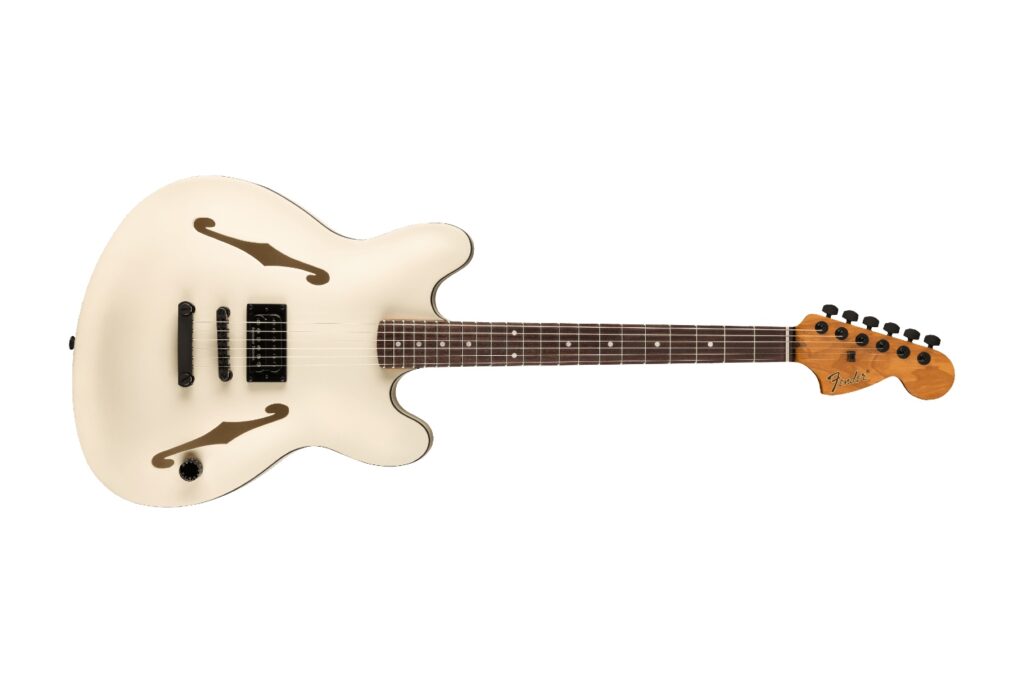Fender Music Australia | Price: $2349
I still remember the first time I saw a Gold Foil pickup. I was at my friend Sam’s house and he was showing me a Frankenstein Jazzmaster he had been putting together. There in the bridge position was a groovy little gold mesh pickup, partially obscured by its silver cover. “What is that?” I asked, wide eyed. He explained to me that it was a Gold Foil and I asked him what they sounded like. Sam, normally impossible to stump, immediately scrunched up his face and thought about it for a while before simply replying “I can’t really describe it, it just sounds like a Gold Foil.”
There is something about the sound of those pickups that lives above the buzz words guitarists like myself love to use to describe tone. Since that day I’ve learned a lot about Gold Foils, that they were featured in the cheap mail order guitars in the 60s that ultimately defined the sound of garage rock, that innovators DeArmond and Teisco seem to both be equally credited for their invention and that slide virtuoso Ry Cooder, my personal hero, absolutely swears by them, especially in the neck position in his famous Coodercaster.
Read more gear reviews here.
Despite the acquisition of this knowledge over the years I still struggle to define exactly what it is about the Gold Foil sound that makes it so special. However I’m now in a position in which the application of some apt adjectives is a necessity, so here it goes. These pickups, although generally low output, have a midrange bite to them that is almost papery. They also have a very airy top end, as if there’s a space above the highest frequency your guitar is emitting that your notes have room to drift up into, along with a stiff attack on the front end of each note, and an almost crackly lofi breakup when combined with distortion. Basically they sound like nothing else.
Now that my face is un-scrunched, let’s revel in some good news. Fender, obviously aware that players like my friend Sam have been taking these pickups out of pawn shop guitars and putting them into Fenders for decades, are releasing a whole line of Gold Foil loaded instruments including, for the first time that I’m aware of, a bass. A Jazz Bass no less! And let me tell you, it is a thing of beauty.
Straight out of the box, I was blown away by the look of this thing. I am a sucker for Fender’s matching headstocks, so I got a little giddy when I saw the Sonic Blue finish on the body was on the traditional Jazz Bass headstock too. This combined with the bound fretboard, tortoiseshell pickguard and lollipop tuners amounts to one immensely classy looking instrument.
And now for the big question, what does a Gold Foil pickup sound like in a bass guitar? That airy top end is most certainly present, along with a punchy but warm midrange and a generous and very clean bottom end. This model does not suffer at all from only having one pickup, despite being in contrast to the Jazz Bass’s standard two pickup configuration.
The Fender Jazz Bass has always been my favourite bass guitar. Who can forget the lusciously warm, rounded tone of John Paul Jones? Or the bumpy but bright sonic stylings of the innovative Jaco Pistorious? Released in 1960, The Jazz Bass was Leo Fender’s second design after the Precision Bass, and compared to its thumpier predecessor, it exhibited a more prominent midrange and brighter tone, making it a much more versatile instrument.
Its beautifully contoured body is incredibly comfortable, and its wide frequency range makes it perfect for slap and fingerstyle alike. When pushed to its limits, a Jazz Bass is capable of a middy growl that no other bass can quite live up to, making it particularly suitable for filling out the midrange in smaller bands featuring only one guitar.
These factors have made The Jazz Bass the most popular bass in the world, and although providing a different spin on this classic instrument, The Gold Foil model exhibits those factors in spades. Despite having only one pickup, players will find that by simply manipulating the tone control they will find a plethora of tones at their fingertips. The Gold Foil pickup, being quite low in output, also allows for greater touch sensitivity, meaning this instrument can be incredibly dynamic in the right hands. How hard you play this bass will greatly influence your sound, giving you room to breathe within the dynamics of any sonic landscape.
Aside from the sound, the physical details of The Gold Foil Jazz Bass prove that Fender’s attention to detail has not waned in the modern era. The pearloid dots and white binding on the ebony fretboard, lollipop tuners and matching painted headstock all lend themselves gorgeously to the graceful retro allure of this model. It is truly one of the most beautiful offerings from Fender that I’ve seen in a long time. The Gold Foil pickup, often so associated with lofi garage swagger, looks perfectly at home on this Jazz Bass and yet perfectly counterbalances its upmarket ornamental aesthetic.
View this post on Instagram
At this point I feel that it is my moral duty to warn bassists of all stripes, experience levels and genres that if they try this model out that they are very likely to end up buying. Even I, a humble guitarist by trade, am finding it difficult to resist the temptation. The pawn shop prowess of the Gold Foil pickup and its garage rock legacy combined with the refined jazzy elegance of this model’s design may well have resulted in a perfect instrument.
Every now and then, a legacy company behemoth like Fender comes out with something particularly special, something that they really nail under a sky full of aligned stars. This is one of those times. A cult classic pickup in a blockbuster bass, the Gold Foil Jazz Bass has the best of both worlds.
Head to Fender for more information. For local enquiries, reach out to Fender Music Australia.
